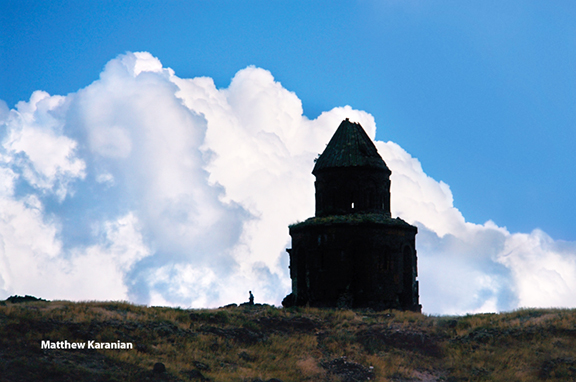
Chapel of Soorp Grigor makes a solitary stand at the Armenian capital of Ani. (Photo: Matthew Karanian, 2014)
ISTANBUL (Armenian Weekly)””The United Nations Educational, Scientific, and Cultural Organization (UNESCO) World Heritage Committee inscribed five new sites on its World Heritage List””including the historic archaeological site of Ani””during its 40th session taking place in Istanbul July 10-20.
According to a press statement released by the committee on July 15, the other newly inscribed sites are in Greece (archaeological site of Philippi), Spain (Antequera Dolmens site), the United Kingdom (Gorham’s Cave Complex), and a transboundary property, located in Croatia, Montenegro, Serbia, and Bosnia and Herzegovina (Stećci medieval tombstones graveyards).
The press statement lists the historic archaeological site of Ani as a “medieval city [which] combines residential, religious, and military structures, characteristic of a medieval urbanism built up over the centuries by Christian and then Muslim dynasties.”